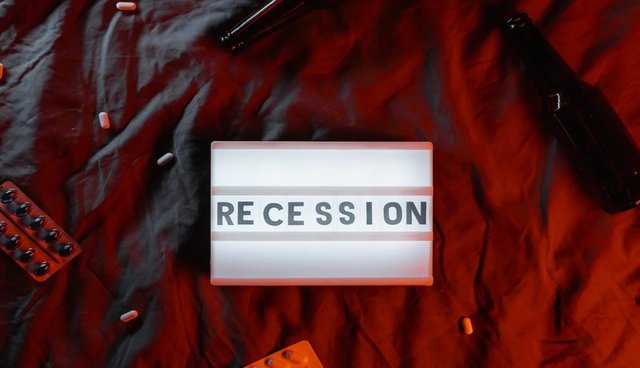Recession: A Closer Look at the Economic Decline

Learn about the causes, effects & ways to mitigate the impact of recessions on the economy & employment. Understand the statistics & history of recessions in the US & globally. Discover opportunities during recessions for entrepreneurs & small businesses
“The only thing we have to fear is fear itself” — Franklin D. Roosevelt
A recession is a period of economic decline characterized by a decrease in gross domestic product (GDP), higher unemployment, and a decrease in consumer spending. Recessions are a normal part of the business cycle, but they can have a significant impact on people’s lives and the economy as a whole. In this article, we will take a closer look at the statistics behind recessions and their effects on the economy and employment.
The United States has experienced 11 recessions since the end of World War II, with the longest one being from 2007 to 2009, which lasted for 18 months. The average length of a recession since WWII is about 10 months.
The shortest recession was in 1980, which lasted only 6 months. Historically, recessions have been caused by a variety of factors, including monetary policy, oil prices, and financial crises. During the Great Recession of 2008–2009, GDP fell by 4.3%.
The International Monetary Fund (IMF) estimates that the global economy contracted by 3% in 2020 due to the COVID-19 pandemic, the deepest recession since the Great Depression of the 1930s. The IMF predicts that the global economy will recover in 2021 with a growth rate of 5.5%.
Unemployment rates tend to increase during a recession. According to data from the Bureau of Labor Statistics, the unemployment rate reached a peak of 10% during the Great Recession of 2008–2009. This is significantly higher than the pre-recession unemployment rate of 4.4%.
In addition to higher unemployment rates, job openings also tend to decrease during a recession. According to data from the Bureau of Labor Statistics, job openings fell by over 50% during the Great Recession. The highest ever recorded unemployment rate in the US is 24.9% in 1933 during the Great Depression.
The average unemployment rate in the US is around 5%. According to the World Bank, the global poverty rate increased from 9.2% in 2019 to 9.7% in 2020 due to the economic consequences of the COVID-19 pandemic. It’s important to note that while recessions can be difficult, they also present opportunities.
During a recession, many companies may be looking to cut costs and restructure their businesses. This can create opportunities for entrepreneurs and small businesses to grow and take advantage of market opportunities.
Recessions are a nomal part of the business cycle but have a significant impact on the economy and employment. The statistics show that recessions lead to a decrease in GDP, an increase in unemployment, and a decrease in job openings. However, it’s important to remember that recessions are not permanent and are followed by periods of economic growth. Businesses should be aware of the potential effects of a recession and plan accordingly to mitigate the impact on their operations
In short, recessions are like a bad hangover — they suck at the time but eventually, you’ll recover and even find opportunities. This article is like a trusty friend holding your hair back and providing tips on how to make it through the tough times
KEY POINTS
- According to the National Bureau of Economic Research (NBER), the United States has experienced 11 recessions since the end of World War II.
- The length of recessions varies, with the longest one being from 2007 to 2009, which lasted for 18 months.
- The average length of a recession since WWII is about 10 months.
- The shortest recession was in 1980, which lasted only 6 months.
- Historically, recessions have been caused by a variety of factors, including monetary policy, oil prices, and financial crises.
- During the Great Recession of 2008–2009, GDP fell by 4.3%.
- According to the International Monetary Fund (IMF), the global economy contracted by 3% in 2020 due to the COVID-19 pandemic, the deepest recession since the Great Depression of the 1930s.
- The IMF predicts that the global economy will recover in 2021 with a growth rate of 5.5%.
- According to the Bureau of Labor Statistics, the highest unemployment rate reached during the Great Recession of 2008–2009 was 10%.
- The highest ever recorded unemployment rate in the US is 24.9% in 1933 during the Great Depression.
- The average unemployment rate in the US is around 5%.
According to the World Bank, the global poverty rate increased from 9.2% in 2019 to 9.7% in 2020 due to the economic consequences of the COVID-19 pandemic. - It is important to note that these statistics may vary depending on the source and the method of calculation. Also, the number and severity of recessions are affected by multiple factors such as monetary and fiscal policies, economic conditions, and geopolitical events.